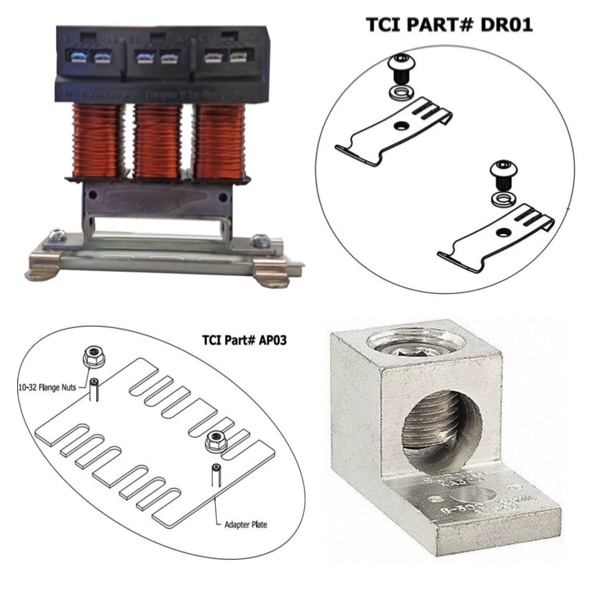Reactor Accessories

Line Reactors protect Variable Frequency Drives (VFDs) from input power line disturbances by smoothing and slowing down incoming voltage distortion. They also reduce harmonics generated by the VFD that travel back into the power line. A line reactor is coil of wire that forms a magnetic field that current flows through. The magnetic field limits the rate of the rise of the current, reducing harmonics. Line Reactors help to stabilize the current waveform and act as an impedance between the power source and the VFD. The impedance will protect the input section of the VFD and reduce the harmonic current drawn from the power system by the drive.
Load Reactors provide a buffer between Variable Frequency Drives (VFDs) and motors to reduce the voltage stress on the motor and to condition the waveform into a more suitable profile. This allows the motor and lead cable to operate cooler, putting less stress on the current carrying components of the drive application. A standard Pulse Width Modulated (PWM) drive produces a square wave power supply to the motor. That modulated square waveform has sharp edges on the waveform transitions. The drive will simulate a usable waveform modulated at very fast speeds to vary the speed of the electric motor. Those fast waveform pulses create the voltage distortion and spikes that can cause damage to the motors insulation system and shorten the motors lifespan. The design inductance of the line reactor will act to soften the sharp edges and slow down the distortion as the voltage is provided to the motor.
Inductive Load Basics
Electrical load is an electrical component or portion of a circuit that consumes electrical power. For example, a power source such as a battery or generator will have a load which consumes that power, such as a light bulb, motor or television.
There are three types of electrical loads: capacitive loads, resistive loads and inductive loads
Capacitive and Resistive Loads
Capacitive loads are similar to inductive loads in that the current and voltage are out of phase with one another, however, capacitive loads see the current reach its maximum before the voltage, while inductive loads see the voltage reach its maximum before the current. Resistive loads typically consist of things like heating elements.
Inductive Loads
Inductive loads use a coil to produce a magnetic field. The most common types of inductive loads are motors, fans, blenders and pumps. Inductive loads resist change in current, which lags behind the voltage. There are two different types of power with inductive loads. There is real power, which is based off of the work that is actually being done by the motor and there is reactive power, which is the power that is drawn from the power source to produce the magnetic field. The total power of an inductive load combines both the real power and reactive power.

